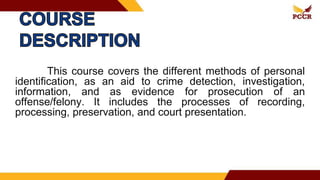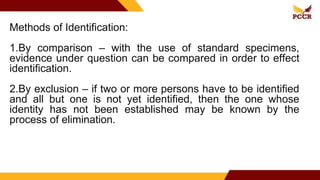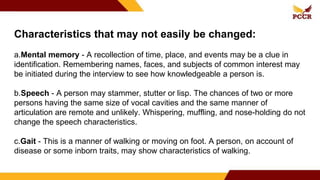Fingerprints are the most reliable method of personal identification. This course covers various identification methods used in criminal investigations and prosecutions. It discusses the classification of fingerprint patterns and the history of fingerprint identification from ancient China to its modern use. Key developments include Galton's establishment of fingerprint patterns, Henry's creation of fingerprint databases in India, and DNA testing which now provides the most accurate identification. A variety of physical characteristics can be used for identification, but fingerprints, photographs, blood samples, and DNA remain the scientific standards.






























